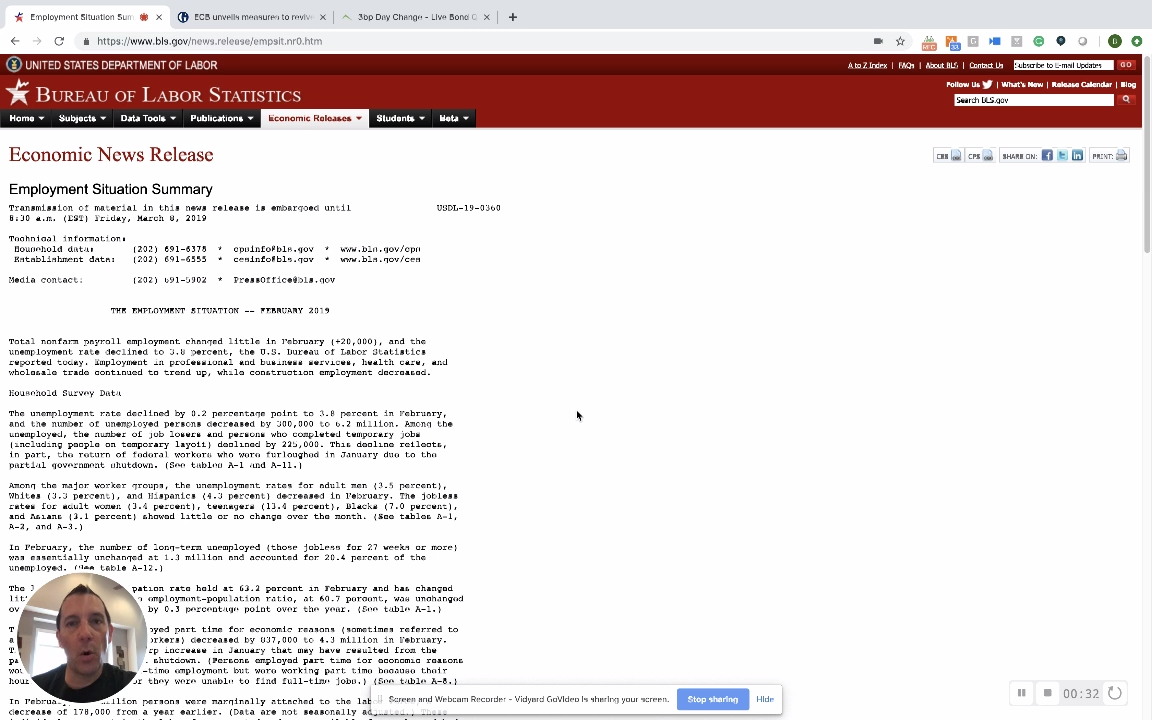-
 Navigating the Shifting Landscape of Commercial Lending Explore the evolving trends in commercial lending, including the integration of technology, impacts of interest rate changes, and the rise of ESG considerations.
Navigating the Shifting Landscape of Commercial Lending Explore the evolving trends in commercial lending, including the integration of technology, impacts of interest rate changes, and the rise of ESG considerations.
Symmetry Lending Deploys MortgageFlexONE
- Monday, 25 March 2019
- Originating

Atlanta-based Symmetry Lending, a home equity line of credit specialist, has implemented MortgageFlex Systems’ MortgageFlexONE loan origination system.
Symmetry, a registered credit union service organization, sought a system that could support their commitment to service, speed, and simplicity.
[caption id="attachment_11293" align="alignleft" width="175"] David MacInnis[/caption]
David MacInnis[/caption]
“Our commitment to the loan origination community, as well as our lender partners, required an end-to-end system with ultimate flexibility,” said David MacInnis, president of Symmetry Lending. “In our search for a technology partner, MortgageFlex was a clear leader in understanding and embracing our unwavering commitment to bring service, speed, and simplicity to an otherwise complex business. We look forward to working with MortgageFlex as we take our technology to an even higher level in 2019.”
[adbutler zone_id="326324"]
[adbutler zone_id="326327"]
After evaluating several systems, Symmetry Lending found MortgageFlexONE to be the most advanced loan origination system for HELOCs and the best suited to meet their needs. MortgageFlex Systems focused on automatic workflow and real-time operations.
MortgageFlexONE’s flexible design allows Symmetry to tailor the solution to meet their requirements for data consistency, and accuracy. Symmetry deployed MortgageFlex’s new advanced system and proven quick deployment method to get everything done simply and timely.
“Symmetry’s business model provided some unique challenges,” said Craig Bechtle, COO of MortgageFlex Systems. “But we were confident in the technology and the team and, in the end, it was a smooth deployment. The flexibility in the product enabled the implementation team to easily address the unique business needs.”
Read more...Bill Bodnar with the Mortgage Market Guide Recap: March 8
- Friday, 08 March 2019
- Originating

https://youtu.be/jIBKEmo8o58
Hi, Bill Bodnar here with the Mortgage Market Guide recap.
So, mortgage backed securities and the financial markets are reacting to the jobs report that came out today.
The headline number was a bit of a stinker, only 20,000 jobs created. That was well below expectations of 175,000 jobs. But when you took a closer look under the hood there were some upward revisions to the previous month, which was positive.
We also watched the longest one month decline in total unemployment. That number was over 8% and that dropped to 7.3%, so that was a very positive sign. And then hourly earnings, something we've been watching very carefully, are rising steadily. They rose by four-tenths, which is a big month increase, and that left year-over-year wages at 3.4%.
[adbutler zone_id="326324"]
[adbutler zone_id="326327"]
So, that's a great sign. That's the hottest wage gain in 10 years. That's a really positive sign.
We are watching bonds basically touching the same highs we were at the last time these job reports came out. We are at a level of resistance, but you can notice a little trend higher. Why? What was the catalyst for the bond market to kind of recover after the losses we had in the previous week?
And what we're seeing here is that ECB slashed their growth for the future, so they're showing growth coming in at 1.1%, where original forecasts were at 1.7%. And that's a significant down grade.
The other thing we are looking at as well is that inflation has been trending low. And inflation is the driver of interest rates. When inflation abroad gets depressed, we actually import it. It washes on to our shores. We're seeing yields across the globe compress--or come down.
And that is coming back to us and we're seeing the 10-year yield back at like a 2.65%, or so, and we're watching our bonds at one-year highs.
A couple of numbers that I would leave you with for the weekend: No.1 in order for the bond market to get better and see better rates, we are going to need to see prices break above this ceiling. This ceiling coincides with about 2.6% on the 10-year notes, so if you're tracking the 10-year note, we're looking at 2.6% on the 10 year note as a real level we need to bust below.
To see rates get much, much better. In the stock market, we're watching the S&P 500 closely right now. It's trading beneath its 280-day moving average at 2,750. We do not want to see that stay under 2,750 for long, because if it does, that could lead to more selling. And that money could find its way into the bond market, and we could see lower rates ahead.
So, all in all, an OK jobs report. The hourly earnings was very positive. That's a great number for housing overall.
And one last thing I'll leave you this, we are watching--what we call- a golden cross--which happened back in February. And that usually says, "That better prices are ahead.” And isn't it funny that we are testing the best levels of the year.
If we move a little bit higher, things will be even higher in the weeks ahead.
Read more...Mortgage Applications Declined Last Week
- Wednesday, 13 February 2019
- Originating

Mortgage applications decreased 3.7 percent from one week earlier, according to data from the Mortgage Bankers Association’s Weekly Mortgage Applications Survey for the week ending Feb. 8, 2019.
The Market Composite Index, a measure of mortgage loan application volume, decreased 3.7 percent on a seasonally adjusted basis from one week earlier. On an unadjusted basis, the Index decreased 4 percent compared with the previous week. The Refinance Index decreased 0.1 percent from the previous week.
The seasonally adjusted Purchase Index decreased 6 percent from one week earlier. The unadjusted Purchase Index decreased 6 percent compared with the previous week and was 5 percent lower than the same week one year ago.
[adbutler zone_id="326324"]
“Application activity fell last week--even with rates decreasing--as renewed uncertainty about the domestic and global economy likely held potential homebuyers off the market,” said Joel Kan, associate vice president of industry surveys and forecasts of the MBA. “Despite the recent decline in applications, we still expect that the continued strength of the job market and lower rates will support more purchase activity in the coming months.”
The refinance percentage of mortgage activity increased to 43.2 percent of applications, from 41.6 percent the previous week. The adjustable-rate mortgage share of activity decreased to 7.5 percent of applications.
The Federal Housing Administration percentage of applications increased to 11 percent, from 10.5 percent the week prior. The Veterans Affairs percentage of applications increased to 11 percent, from 10 percent the week prior. The Department of Agriculture percent of applications increased to 0.6 percent, from 0.5 percent the week prior.
The average contract interest rate for 30-year fixed-rate mortgages with conforming loan balances ($484,350 or less) decreased to 4.65 percent from 4.69 percent, with points decreasing to 0.43 from 0.45 (including the origination fee) for 80 percent loan-to-value ratio loans. The effective rate decreased from last week.
The average contract interest rate for 30-year fixed-rate mortgages with jumbo loan balances (greater than $484,350) decreased to 4.48 percent from 4.50 percent, with points decreasing to 0.27 from 0.28 (including the origination fee) for 80 percent LTV loans. The effective rate decreased from last week.
The average contract interest rate for 30-year fixed-rate mortgages backed by the FHA decreased to 4.61 percent from 4.70 percent, with points decreasing to 0.53 from 0.57 (including the origination fee) for 80 percent LTV loans. The effective rate decreased from last week.
“The 30-year fixed-rate mortgage dropped to its lowest level since last March and was 52 basis points lower than its recent high last November,” said Kan. “Government refinances provided a bright spark, picking up over 10 percent, as both FHA and VA refinancing activity saw increases over the week.”
The average contract interest rate for 15-year fixed-rate mortgages decreased to 4.04 percent from 4.11 percent, with points increasing to 0.48 from 0.47 (including the origination fee) for 80 percent LTV loans. The effective rate decreased from last week.
The average contract interest rate for 5/1 ARMs decreased to 3.97 percent from 4.04 percent, with points increasing to 0.42 from 0.37 (including the origination fee) for 80 percent LTV loans. The effective rate decreased from last week.
Read more...Homes for Sale Nationwide Tumbled 4.6 Percent
- Friday, 21 December 2018
- Originating

The number of homes for sale nationwide tumbled 4.6 percent year-over-year in the last three months of 2018 across all price categories, according to the latest Inventory and Price Watch Report from Trulia. This marks the ninth consecutive quarter of declining inventory; the last time inventory rose was in Q3 2016. However, there are signs of progress with the nation's most expensive housing markets seeing large inventory gains.
Buyers Face Tighter Inventory and Worsening Affordability Heading Into 2019
The inventory drop is driven by the premium home segment where the number of for-sale homes fell 7.8 percent year-over-year, followed by modest declines across starter (2.2 percent) and trade-up homes (1.5 percent). Meanwhile, affordability has worsened across all housing segments as tight inventory and slow wage growth continues to put upward pressure on home prices. Nationally, starter home prices rose the most, up 13.9 percent from the last year. As a result, a typical starter-home buyer must now spend 41 percent of their income on a monthly mortgage payment, up from 34.2 percent a year ago.
"After promising signs of slowing inventory declines last quarter, the news is mixed as we close out 2018," said Cheryl Young, senior economist, Trulia. "While more sellers are listing homes in expensive West Coast markets, most homebuyers must still contend with tight inventory that's down 24 percent from five years ago. Coupled with slow wage growth, prices continue to inch higher, worsening affordability within the starter home market and possibly putting homeownership out of reach for many first-time buyers."
Starter and Trade-Up Home Inventory Surges in Pricey California Markets
Housing markets in the West experienced the nation's largest inventory gains despite the large dip in supply. Among the 100 largest U.S. metros, six of the markets with the biggest surge in inventory from last year were in California, most notably in San Jose (66.6 percent), San Francisco (36.5 percent) and Oakland (29.2 percent). This surge in every market except New York was driven by growth in starter and trade-up homes. In fact, the number of starter and trade-up homes in San Jose almost doubled from a year ago.
Starter Home Affordability Continues to Worsen
Despite inventory gains in the most expensive housing markets, prices continue to rise and outpace wage growth, especially in the starter home category. This has further put homeownership out of reach for many first-time buyers. For example, a typical starter-home buyer in San Francisco where the median starter home lists for nearly $900,000, would need to spend an unrealistic 146.9 percent of their income to afford a home.









